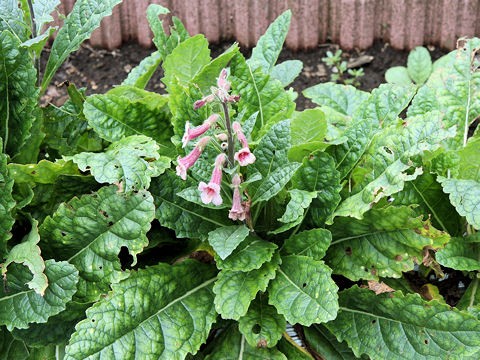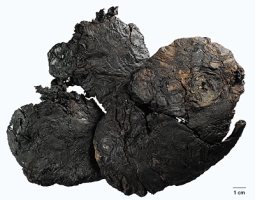- Hematemesis, epistaxis, uterine hemorrhage due to Heat from deficiency, with
Equus asinus- E jiao.
[3]
- Dry throat, irritability, T- red, P- fast thready, which are characteristic
of a devasted Yin with raging Fire, with
Xuan
shen.
[3]
- Heat smoldering in the Yin regions of the body with night fever and morning
coolness, emaciation, T- red body, with
Anemarrhena
asphodeloides- Zhi mu and
Artemisia annua-
Qing hao.
[3]
- Heat symptoms due to Blood deficiency, with
Paeonia
lactiflora- Bai shao. If bleeding symptoms such as hematuria, hematemesis,
epistaxis occurs as a result of Heat in the Blood level, add
Imperata
cylindrica- Bai mao gen,
Sanguisorba
officinalis- Di yu.
[3]
- Yin deficiency and devasted Blood, with
Shu di huang-
Cooked Sheng di huang.
[3]
- To prevent the development of stagnating digestive side effects such as diarrhea,
nausea or abdominal pain,
Amomum villosum-
Sha ren is often added to the prescription.
[1] Barefoot Doctors Manual- Published
by Madrona Publishers Seattle Washington ISBN 0-914842-52-8
[2] A Complete English Dictionary of Medicinal Terms in Chinese Acupuncture
and Herbalism 1981- Henry Lu Chinese Foundations of Natural Health- The Academy
of Oriental Heritage, Vancouver, Canada.
[3] Chinese Herbal Medicine Materia Medica- Dan Bensky and Andrew Gamble- Eastland
Press 1986 Seattle Washington ISBN 0-939616-15-7
[4] The Chinese Materia Medica A practical English- Chinese Library of Traditional
Chinese Medicine Publishing House of Shanghai University of Traditional Chinese
Medicine. Director Hu Ximing ISBN 7-81010-111-X/R-110
[5] Translation notes from Gary Seiford and Hocu Huhn- NSW College of Natural
Therapies. Sydney Australia (1982).
[6] Mediherb- A herbal extract company based in Warwick Qld. 4370 Australia
www.mediherb.com
[7] The Pharmaceutical Plant Company Pty Ltd
ppcherbs.com.au
Images
1.
innerpath.com.au
2.
[1]
3.
tcmedicine.org
4.
pinterest.com [1] Barefoot Doctors Manual- Published
by Madrona Publishers Seattle Washington ISBN 0-914842-52-8
[2] A Complete English Dictionary of Medicinal Terms in Chinese Acupuncture
and Herbalism 1981- Henry Lu Chinese Foundations of Natural Health- The Academy
of Oriental Heritage, Vancouver, Canada.
[3] Chinese Herbal Medicine Materia Medica- Dan Bensky and Andrew Gamble- Eastland
Press 1986 Seattle Washington ISBN 0-939616-15-7
[4] The Chinese Materia Medica A practical English- Chinese Library of Traditional
Chinese Medicine Publishing House of Shanghai University of Traditional Chinese
Medicine. Director Hu Ximing ISBN 7-81010-111-X/R-110
[5] Translation notes from Gary Seiford and Hocu Huhn- NSW College of Natural
Therapies. Sydney Australia (1982).
[6] Combinations and Applications, Xu Li, Translated by Dr. Li Xu, Contributor
Dr. Wei Wang Publisher Elsevier Health Sciences, 2002. ISBN 1901149021, 9781901149029 Rehmannia
glutinosa 地
黄 Dì
huáng Rehmannia,
Figwort, Chinese Foxglove
Family: Scrophulariaceae
Rehmannia
glutinosa 地
黄 Dì
huáng Rehmannia,
Figwort, Chinese Foxglove
Family: Scrophulariaceae

 FLAVOR: Sweet, pleasant, slightly
bitter.
FLAVOR: Sweet, pleasant, slightly
bitter. 
 HABITAT:
Grows mostly on hill-sides, foothills and waste places along roadsides.
HABITAT:
Grows mostly on hill-sides, foothills and waste places along roadsides.